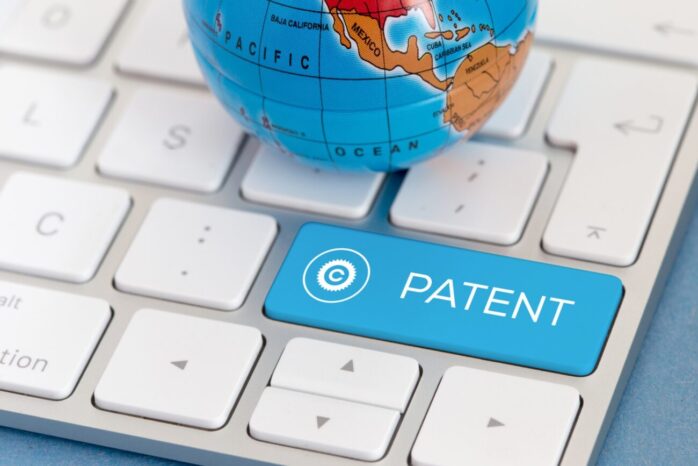
Are you an innovator looking for protection for your inventions abroad? Ensuring that your inventions are legally protected from potential infringement is essential.
In this blog, you will learn how to protect your inventions internationally through the process of patent registration. Read on to explore the various patent laws of different countries and discover how to safeguard your ideas!
International Patent Laws

International patent law helps inventors protect their inventions and covers intellectual property rights in a global context. While some countries have laws that are similar to those found in the United States, many have different requirements or processes that must be followed in order to obtain a patent. If you need help in this area, InventHelp is a place to go.
International Patent Rights: Generally speaking, when you apply to obtain a patent in another country, you get the same protection as if you had applied for it domestically. All countries have different rules regarding the protection of intellectual property rights, but most industrialized nations honor each other’s patents.
The Paris Convention: The Paris Convention is an international treaty signed by many signatory countries that recognize the importance of patents as well as copyrights for creators who wish to protect their works/inventions throughout the world. This means that if you submit a patent application in one member country, it will be valid for all other Paris Convention countries within 12 months from the submission date with no extra fees or forms required; this is referred to as a “priority right.”
Patent Cooperation Treaty (PCT): This treaty was created in order to make it easier for inventors and businesses to secure international patents by providing an international platform on which various national laws can be compared and harmonized. Through the PCT filing system an inventor can first make one application covering all desired countries and then ask each country separately if they want it – thus reducing paperwork costs drastically compared to making separate applications simultaneously with each nation’s respective authorities (which would require costly legal advice).
Understanding the Process

Generally speaking, an inventor who wants to obtain international patents will first have to secure the copyright in the inventor’s home country. This process requires filing an application with the relevant intellectual property authority.
Once a patent is granted in the inventor’s home country, that person can then apply for international patents in specific foreign countries or organizations like the European Patent Office.
Why go through the trouble?
International patents may cover a range of products, from nanotechnology and biotechnology to software and even business methods. Obtaining international rights offer many benefits and can be an important tool for those who wish to expand their operations in the global marketplace.
Among the main advantages of international patent protection are:
- Legal Recognition: Inventions secured on a global basis give recognition of an invention in all countries that grant it protection;
- Protection of Rights: An invention is generally protected by national laws, so by obtaining an international patent your rights are extended all over the world;
- Competitive Advantage: By securing an international license you can block competitors from using your invention without penalty or prosecution;
- Formal International Bond: Having points of connection across different countries helps create stronger links between nations that cannot enter into conventional contracts or agreements;
- Monetary Expansion Access: Securing an international patent allows individuals or companies to open doors to expanded markets that they would not be able to access with a limited national patent alone.
Strategies for Successfully Protecting Inventions Abroad

The following are some general strategies that can be used to successfully protect inventions internationally:
- Consider filing separate patents in each country where protection is desired. National laws vary from country to country; an invention considered novel in the United States may not be considered novel in Canada or elsewhere. Separate filings should be done for each nation where protection is sought.
- Analyze the market for the invention relative to your business goals – consider where you wish to sell or license your invention, any expected locations of potential infringers, potential competitors overseas, and the cost-benefit of filing separate patents in each territory or utilizing larger regional or supranational bodies such as the EPO or African Intellectual Property Organization (AIPO).
- Consider taking advantage of special laws existing for certain countries; especially if you are planning on selling very specific products into that jurisdiction – certain governments offer solace for certain types of innovations such as clean energy technology.
- Utilize regional forums like the European Patent Office (EPO) or African Intellectual Property Organization (AIPO), when appropriate and possible – these bodies can provide quicker turnarounds than filing with individual nations but may have limited scope depending on the jurisdiction being protected.
Resources for Further Research

When it comes to learning about international laws, there are many resources available to help you further your research. You can visit government websites in the countries where you plan to apply for legal protection, read scholarly journals and university library articles, consult with an experienced attorney or lawyer, and attend educational seminars on the subject.
Additionally, organizations such as the World Intellectual Property Organization (WIPO) provide access to international treaty material related to intellectual property and can be valuable tools when exploring countries’ intellectual property regulations and legal systems.
It is important that inventors become familiar with the laws of all countries where they plan to receive or enforce patents, as well as developments in international treaty law so they can make informed decisions about their own intellectual property rights. Knowing both domestic and foreign patent laws will help ensure your inventions are used fairly and protect them from exploitative practices around the globe.
Conclusion

In conclusion, seeking international patent protection is an important step for those wanting to protect their inventions and intellectual property rights. While the process can be complex and costly, in some cases it can also be advantageous or even necessary.
Every country has different laws and regulations that must be adhered to when obtaining a patent, so it’s important to become familiar with the requirements in each country before attempting to obtain copyrights abroad. Consider enlisting the help of a qualified attorney who is experienced in international law so you can ensure your invention is protected from infringement from foreign competitors.











